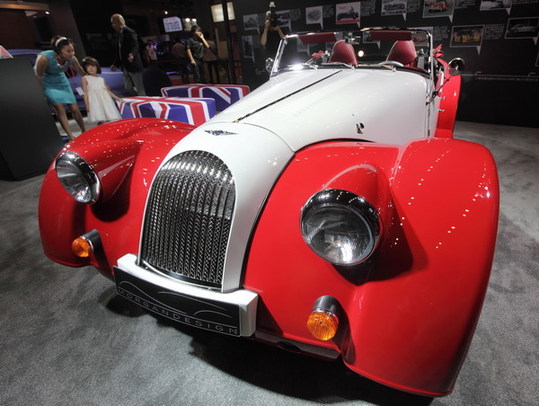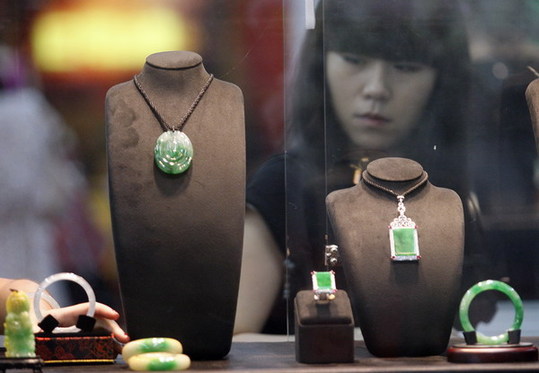
|
 |
|
A new model of car from Morgan, the luxury car brand based in Britain, on display at the 2012 Beijing International Top Brands Exhibition at the China International Trade Center on June 8. More than 80 famous brands from China and abroad took part in the exhibition. [Photo/China Daily] |
|
 |
|
Precious jewels and jade at the show. [Photo/China Daily] |
Office worker Candy Xie sent her Gucci purse to a small store near the World Trade Center in Beijing after the shopkeeper promised to remove ink stains for 300 yuan ($47.1).
"I had to do it because the brand's franchise store refused to," the 28-year-old said.
Xie is just one of the hundreds of millions of luxury consumers in China who face problems maintaining their designer goods.
Makers of high-end brands do not usually undertake the responsibility of cleaning soiled products and repairing broken items can take a long time because very few top designers have maintenance factories in China. Often a damaged article needs to be sent back to the country of origin.
This absence creates opportunities for Chinese entrepreneurs that have been received with open arms over the past two years.
Beijing Landscape Luxury Leather Repair and Maintenance Co Ltd, a small company with only one shop dealing with luxury goods since 2010, makes a monthly income of more than 150,000 yuan from its repair and maintenance business, said Wang Ruilin, marketing director of the company.
The charges differ according to the service, Wang said. Generally speaking, one job costs between 250 and 500 yuan, but some consumers have spent thousands of yuan in the store because their property requires several procedures to restore it to a pristine condition.
In addition to maintenance and repair, some customers also require alterations because the luxury products' original design is not suitable for Chinese people, Wang told China Daily.
"The most common items are belts," Wang said. "The international luxury brands make their belts too long and Chinese customers have to cut off six to eight-centimeters."
The problem is, of course, what will happen if the manufacturers of luxury brands decide themselves to focus on this aspect of the market.
However, those in the business now show no lack of confidence in their future.
"We can cooperate with the luxury brands, if they want," said Li Rixue, president of Secoo China, a company working on selling secondhand high-end products, maintenance and other businesses related to luxury goods.
The international luxury brands will not build totally new maintenance factories in China. It would cost them a lot. Rather, cooperation with those already in the market is the best way forward for luxury brands, Li said.


 Washington to remain focused on Asia-Pacific
Washington to remain focused on Asia-Pacific RQFII target blue chips amid bear market
RQFII target blue chips amid bear market Australian recall for top two exporters
Australian recall for top two exporters China fears new car restrictions
China fears new car restrictions